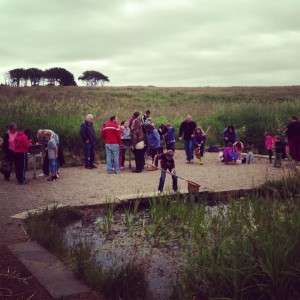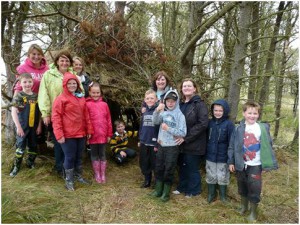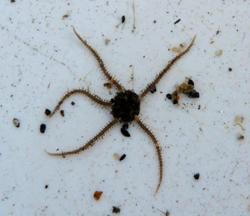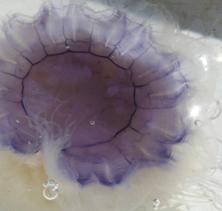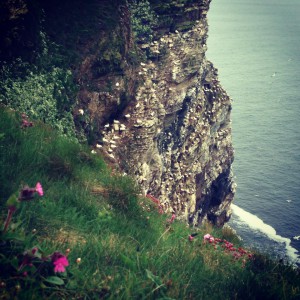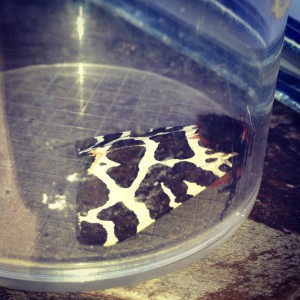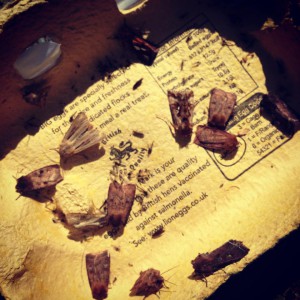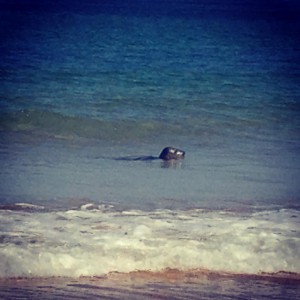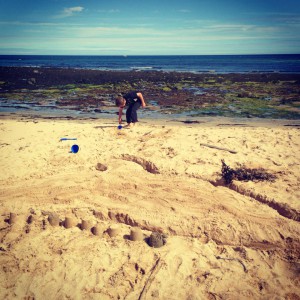
During the summer, at RSPB Loch of Strathbeg, we decided to host a series of weekly events over the course of 6 weeks. Our ‘Wild Kids’ events were open to the public, for them to come and explore the reserve, it’s nature and the work we do here. Not to mention, getting outdoors and having fun!
For the very first week of Wild Kids, we decided to do our most popular activity at Loch of Strathbeg and went… POND DIPPING! We are lucky to have our very own pond , that is bursting with aquatic mini-beasts hiding in the pondweed. The sun was out this week and we had more than 40 eager kids and parents turn up – we ended up doing two dipping sessions to make sure that everyone had a go!
– ‘Wild Kids’ pond dipping at Loch of Strathbeg –
Lots of interesting creatures were caught, including Great Diving Beetle larvae, Pond Snails, Toad Spawn and Three-Spined Sticklebacks. We caught a couple of male sticklebacks, identifiable by their bright red throats. During the breeding season, male sticklebacks invest large amounts of Carotenoids from their diet, essential for maintaining body functions, into their throat. This is a signal to the females that they are healthy and in good breeding condition!
– Three-Spined Stickleback, Male in breeding condition –
I was away on holiday, in Croatia, for the second and third week’s of ‘Wild Kids’ but I have been assure that both days were warmly received. The theme for the second week was MAMMAL DETECTIVES, so the kids went onto the reserve to search for signs of mammals (tracks, droppings, dens etc…) and then made plaster casts of animal tracks. The third week was SHELTER BUILDING. For this, the kids went to an area of the reserve that not many people visit, called ‘the plantation’. Here they put to good use, some of the branches of the felled Lodgepole pine, to make a giant shelter. They had two objectives; everyone had to fit in the shelter at the same time and it had to be watertight! Iain, our intern, told me that there were a few people leaving with soggy clothes at the end of the day!
– Shelter building in the plantation –
We decided to relocate for the fourth week of Wild Kids, as it luckily coincided with our ‘Gannet Week’ celebrations held at RSPB Troup Head, in partnership with Macduff Marine Aquarium. First off, we went down to shore in front of the aquarium with our nets and trays to do some ROCKPOOLING. We caught heaps of interesting sea-creatures including jellyfish, brittle stars, sea anemones, starfish, limpets and hermit crabs. It is amazing what can be discovered when the tide goes out!
– Brittle star, Jellyfish, Sea Anemone and Starfish –
In the afternoon, we took a trip to RSPB Troup Head to have a look at Scotland’s only mainland gannet colony. On the walk towards the cliff tops, we saw lots of wildlife. Skylarks were singing high above the fields and their were plenty of moths and butterflies, including Common Blue’s and 6-Spot Burnett’s, taking advantage of the warm summer sun and ample nectar supply from the carpet of flowering Spring Squill and Bird’s Foot Trefoil. After a short walk, we arrived at the cliff top. The gannet colony did not disappoint, it was bustling with huge, fluffy white chicks bursting out of their nests while their parents disappeared in search of food or returned with of stomach full of fish to regurgitate to the impatient youngsters. Gannets are the largest seabird in Europe, with a wingspan of up to 2m, but despite their great size, they hunt by gracefully and accurately diving from great heights and high speed, deep into shoals of fish. They have a few special adaptations that enable them to hunt in this way; they have no external nostrils on the beak, they have air sacs located in the face and chest that cushions the impact and their eyes are positioned towards the front of the face, giving them binocular vision (better for accurately judging distance!). We have a webcam set up at Troup Head that is streamed live into Macduff Marine Aquarium, so you can pop in there to watch the colony and growing chicks, before they make their first leap off their nests in autumn, ready for their migration south.
– Gannet colony at RSPB Troup Head –
After a fun-filled week at Troup Head for ‘Gannet Week’, we made our way back to Loch of Strathbeg for our penultimate Wild Kids. The theme of the week this time; THINGS THAT GO BUMP IN THE NIGHT!
The first activity of the day was checking the moth trap that was set-up the night before. We caught plenty of specimens, including this beautiful garden tiger. Everyone learnt how the moth trap worked then collected, identified and recorded what we found and got to release them once they were all accounted for.
– Garden Tiger moth & more… –
After the moths, we headed over to the barn to learn all about owls from Julie, a volunteer who used to work on a Barn Owl breeding project based at the World Owl Centre in Muncaster Caste. After she taught us all about the different species of owls in the UK, we then dissected some owl pellets. Pellets are small, oval-shaped objects that contain the undigested parts of the owls prey. They are ejected from the owl’s mouth and consist of things like small mammal bones, teeth, claws, insect head parts and wing cases, seed husks etc. These are usually enclosed by softer material like fur and feathers. Most of the kids were a bit wary at first, but once they realised that the pellets don’t smell unpleasant (they never pass through the owl’s intestines and are quite different from poo!), they got stuck in to the dissection and we managed to reconstruct the whole skeleton of a vole. We planned to finish the day toasting marshmallows around the campfire but the rain started, so instead we made some owl masks (and ate the marshmallows straight from the bag!).
For the sixth, and final , week of ‘Wild Kids’ we thought we should make the most of the summer sun, while we still had it, with BEACH DAY. We took a walk from The Tufted Duck hotel in neaby St Combs, across the reserve and down onto the beach. We kicked off our shoes and got down to some rock pooling. We found sea urchins, hermit crabs and lots of other creatures but the kids were slightly distracted as we were being watched the whole time by a Grey Seal. He was very curious about our group and hung around for more than half an hour. The kids obviously gave him a nickname… ‘Sammy’!.
– ‘Sammy’, Inquisitive Grey Seal –
After a leisurely picnic on the beach we then got creative and made some sand art. We split into two groups and made some giant sculptures of a shark and a dolphin, then got creative with beach litter, seaweed and other bit’s and bob we could find. It was a perfect way to end our ‘Wild Kids’ summer events – on the beach with the sun still shining.
– Dolphin sand art –

